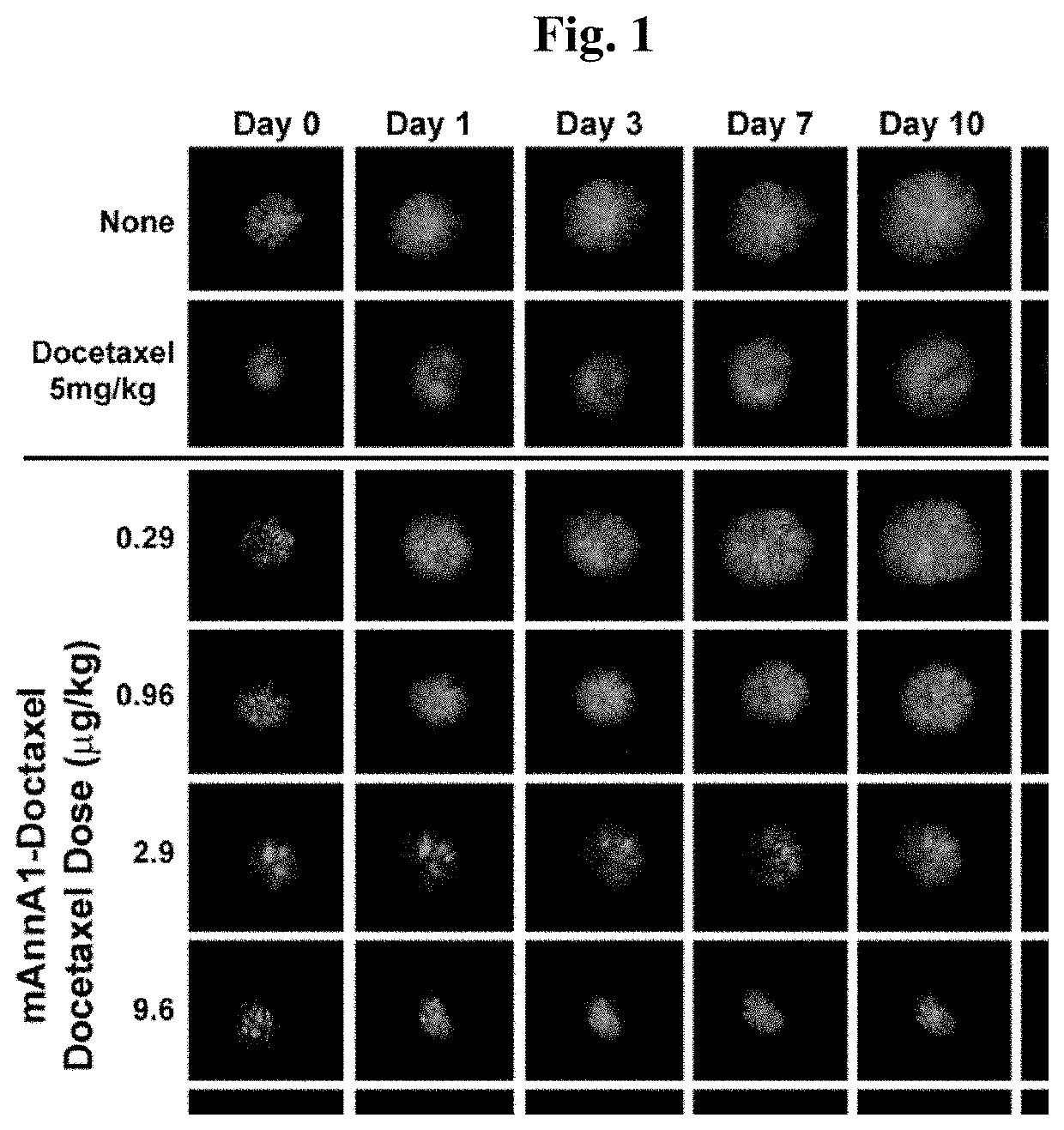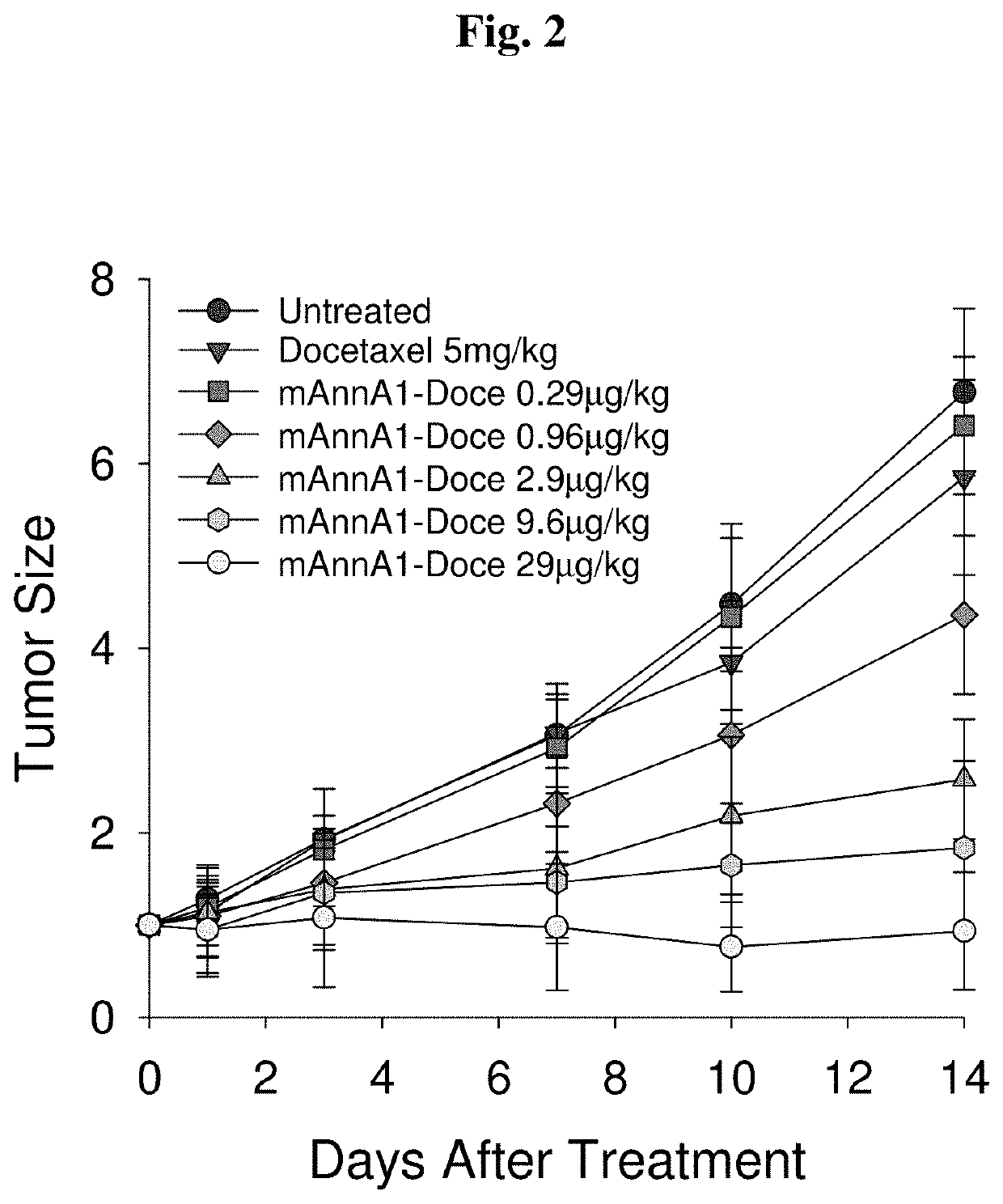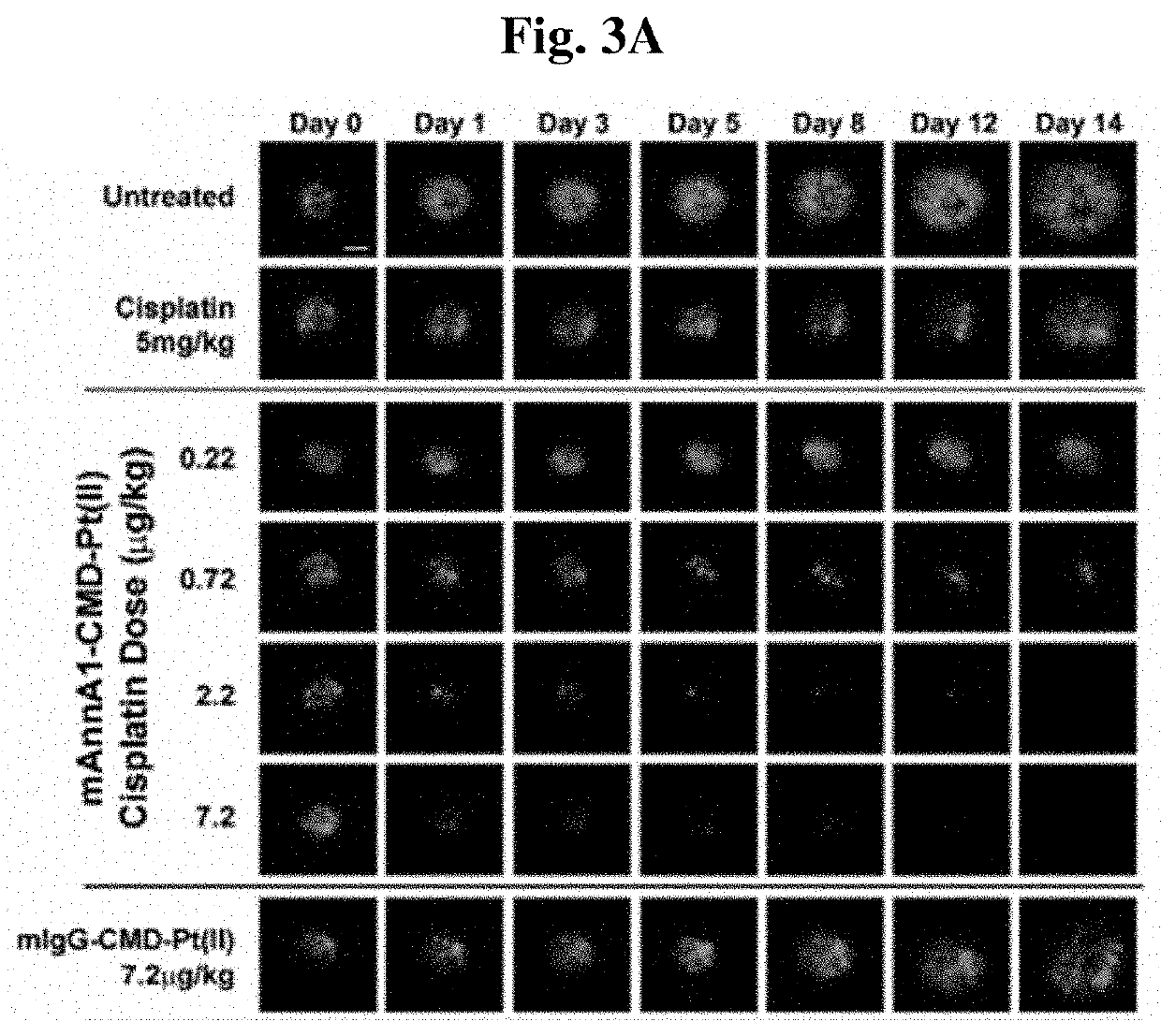Enhanced targeted delivery of therapeutic agents
a targeted delivery and therapeutic agent technology, applied in the direction of immunoglobulins, peptides, drug compositions, etc., can solve the problems of poor delivery efficiency, slow and inefficient passive transendothelial delivery, and unattainable ideal delivery,
- Summary
- Abstract
- Description
- Claims
- Application Information
AI Technical Summary
Benefits of technology
Problems solved by technology
Method used
Image
Examples
example 1
Materials and Methods
[0176]Materials: Monoclonal antibodies to mouse VEGF (B20-4.1.1, G6-31) were provided by Dr. Napoleone Ferrara (Genentech, San Francisco, Calif.). Herceptin (trastuzumab), doxorubicin, and Taxotere (doxetaxel) were obtained via UCSD pharmacy. Mouse IgGs were obtained from Southern Biotech (Birmingham, Ala.). VEGF antibodies (B20-4.1.1 and G6-31) were a gift from Genentech (South San Francisco, Calif.). mAnnA1 and mAPP2 antibodies were made as described previously (Oh et al., 2007; Oh et al., 2004; Oh et al., 2014). Cisplatin was obtained from Sigma-Aldrich (St. Louis, Mo.), as were other chemicals and reagents unless otherwise noted.
[0177]Animals. All animal experiments were performed in accordance with IACUC guidelines at SKCC and PRISM. Female nu / nu athymic nude, C57b6 and FVB mice from either Charles River Laboratories (Wilmington, Mass.) or Jackson Laboratories (Bar Harbor, Me.) were used for the dorsal skinfold implantations and for donor tissues. We used m...
example 2
Caveolae Targeting Enhances Chemopotency at Low Doses
[0194]To assess the ability of improving drug delivery across the vascular barrier as a means to increase therapeutic potency, we conjugated several widely-used chemotherapeutics to create caveolae-targeting antibody-drug conjugates (ADC) that are very effective at low doses. We conjugated each chemotherapy (e.g. doxorubicin, docetaxel, cisplatin) to the caveolae-targeting tumor specific mAnnA1 antibody using methods and materials as described in Example 1. Each targeted drug conjugate was tested in relevant multi-drug resistant tumor models and were found to become more therapeutically effective when compared to unconjugated drug (i.e. not targeted). Results indicate that this strategy is very effective at boosting therapeutic potency at low doses. Indeed, we observed robust therapeutic responses at administered doses in the μg / kg to ng / kg range—orders of magnitude lower than maximum tolerated doses (MTD) and the very high, almos...
example 3
Transvacular Pumping Enhances Radioimmunotherapy
[0207]To assess the potential benefit of targeting caveolae to improve delivery and thus, enhance the therapeutic potency of radio-immunotherapy (RIT), we conjugated a well-known toxic radionuclide 125I directly to mAnnA1 and used fluorescence IVM to visualize the effects of i.v. injected 125I-labeled mAnnA1 (specific activity 10 mCi / mg) (FIG. 8). The highest dose (3 μg) led to obvious extensive tumor and vascular destruction within 24 hr and tumor cell eradication within 3 days. In contrast, Isotype matched control 125I-IgG produced no effect at this dose. Contrary to our expectations, but consistent with pervasive flooding of the tumor with radioactivity delivered via targeted caveolae pumping of mAnnA1, most tumor cell damage occurred well before cessation of tumor blood flow could cause anoxia and infarction. Extensive tumor cell death and pyknotic nuclei were obvious at 12-14 hr post injection, even when ample local blood flow was...
PUM
| Property | Measurement | Unit |
|---|---|---|
| mean diameter | aaaaa | aaaaa |
| volume | aaaaa | aaaaa |
| pH | aaaaa | aaaaa |
Abstract
Description
Claims
Application Information
 Login to View More
Login to View More - R&D
- Intellectual Property
- Life Sciences
- Materials
- Tech Scout
- Unparalleled Data Quality
- Higher Quality Content
- 60% Fewer Hallucinations
Browse by: Latest US Patents, China's latest patents, Technical Efficacy Thesaurus, Application Domain, Technology Topic, Popular Technical Reports.
© 2025 PatSnap. All rights reserved.Legal|Privacy policy|Modern Slavery Act Transparency Statement|Sitemap|About US| Contact US: help@patsnap.com



